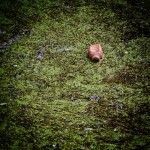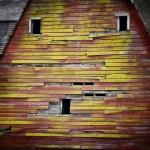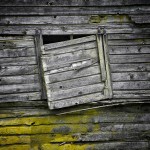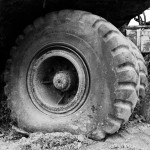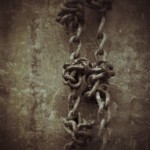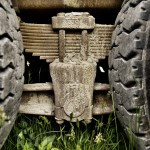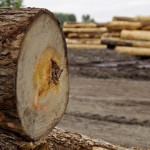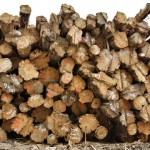Sep
27
2012
It’s pretty much universally accepted that digital photography today provides a better outcome than film as well as a better user experience. Now with more than a decade of digital being mainstream I’m having a look back to see just when that barrier was crossed for the average user. For this comparison (there may be more) I selected two cameras that were available in 2001. The Olympus D-370 is a 1.3Mpixel (1280×960) camera with a 4.5mm F4 lens with 5 elements that gives a 35mm equivalent field of view. And weighing in for film is the Minolta Freedom Escort with it’s 34mm F3.5 four element lens and it’s filmyness. To be fair the Minolta is about ten years older than the Olympus but the film is new.
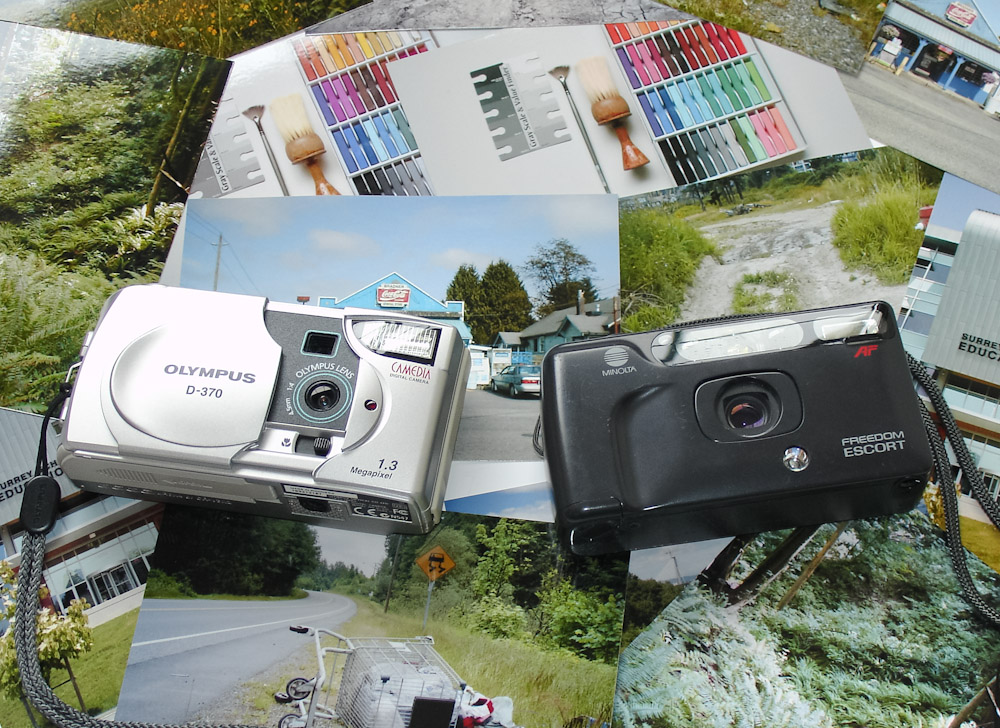
Seeing as most people get prints that are 4×6 I thought I would see if at this size snapshots from the two cameras would be comparable. At that size the (1280×960) of the Olympus should give nearly 220 pixels per inch. I scanned the negatives at higher resolutions but downsized to a comparable 240 PPI for printing. Both cameras actually produced decent 4×6 prints but the film camera took the edge with it’s better lens and films superior dynamic range.
The Olympus prints were only sharp in the center and the sensor couldn’t record much detail in the dark areas of high contrast images. The Minolta with Fuji Superia film was able to record much of the range of any of the scenes and a lot more detail.
So what exactly does this prove? Well for one thing the output quality of pretty much every camera for the last 10 years has been adequate for making 4×6 prints and web sized images. It wasn’t all flowers and butterflies though if anyone cares to remember the difficulties with getting your images off of a camera and into the computer around that time. The other thing it proves is that this was not the time where digital exceded film for the average user not using an SLR or DSLR.
Here are two comparisons the last one zoomed in to one to one, leaving no doubt about films 2001 superiority.

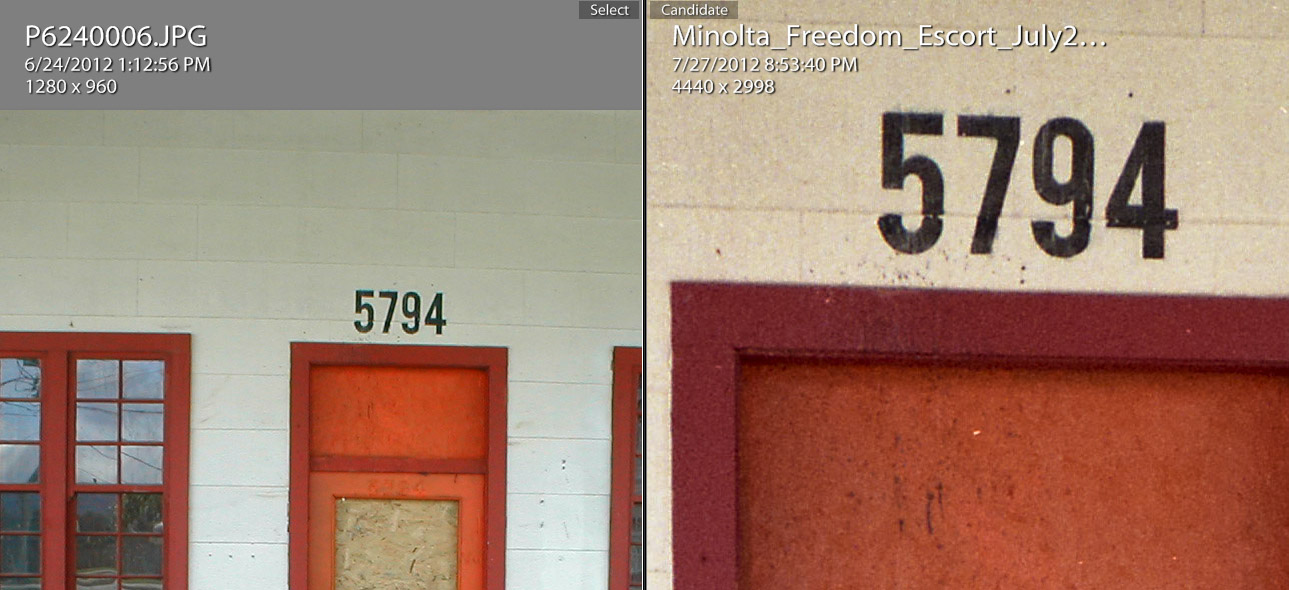
From here I will pick a different camera combination with higher megapixels and see if I can find that cross over point.
5 comments | tags: camera, Digital, film | posted in Cameras, Photography, Processing
Sep
4
2012
No not that awkward day at school when you wore that unfortunate shirt and had that weird haircut. This was just a fun morning of taking pictures shared with another photographer. Here is the link to Duncan’s blog post for the same “Picture day” Granny and Grumpa’s Antiques
We decided to meet at a place in Abbotsford that is renowned for it’s antiques and collectibles, Granny and Grumpas. Neither of us had been there before and despite knowing that there would be a lot to see there was more than I expected. As we were there to take pictures and not necessarily to buy anything we made a small donation before heading into the antique abyss. There really is more than you can take in a short period of time. The other thing to consider photographically is that most of the interiors are very dark. I brought three lenses with this in mind the DA 35 Macro Ltd, DFA 100 f2.8 macro WR and the FA 50 f1.4 as well as a flash the Pentax AF540 FGZ. While using prime lenses limited my framing options the close focusing of the macro lenses worked in the sometimes tight spaces. I ended up with at least as many images on my phone for Instagram as I took with my DSLR but here are some of the latter.
If your wondering what an image of a pond covered in algae has to do with antiques, well that’s another story best asked of Duncan “Wet foot” Turner.
2 comments | tags: Antiques, Digital, Pentax | posted in Photography
Jun
9
2012
I’ve been playing around with editing some digital files on the iPad even before I have uploaded them to my computer. One of the things this allows is the freedom to go over the top with the processing, just as most of the images on social sharing services have digital filters applied, editing on the iPad seems like a license to do it there as well. Would I want all my images to be square and highly saturated? No, but there is a certain appeal to it.
no comments | tags: Digital, iPad, Photography | posted in Photography, Processing, Uncategorized
May
20
2012
I thought I would post these images from today that I took it with the Pentax K-7 and processed on the iPad with Snapseed. While not an ideal workflow I imported the images into Lightroom as this is still the way that I am able to manage the images best. I then sorted and selected a few for further editing on the iPad. To put them on the iPad I use Lightroom’s publish feature to put them in a specific folder for this purpose. That folder is synced to my iPad by iTunes. Once the images are on the iPad it’s as simple as sitting down on the couch and editing.
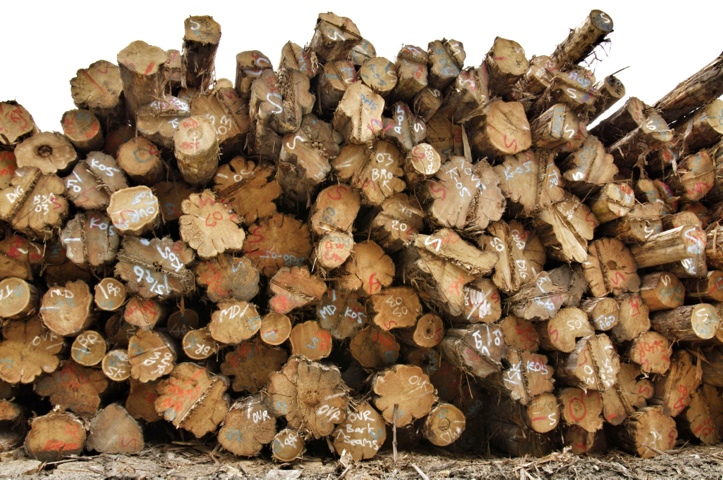
Now the only problem this creates is that if I import them back into Lightroom I will have what appear to be RAW files and edited versions of them renamed by the iPad. For now I am goint to tag them on import until I can figure out a better way. For reference the iPad 3 has no problems editing these full resolution DNG files but at this point they are being reduced in resolution from 4672 x 3104 down to 4096 x 2721 which I haven’t figured out as yet. Using the iPad is certainly a fun way to edit files and allows for more comfortable seating, now where is my coffee?
Taking pictures today was entirely for fun with Duncan of DLTphotographic and am looking forward to seeing his images too because despite being in the same locations I think we took images of different things. Of course the exception would be the few times the pursuit to fill our cell phones with pictures caused overlap, and I didn’t even see the pile of rail spikes.
2 comments | tags: Digital, iPad, Pentax, Photography | posted in Photography
May
7
2012

I’ve posted previously about creating infrared images with the Sony DSC-V3 but never shown the actual contrivance that I use to do it. In an ideal world I wouldn’t need all the step rings but I’ve tried to use only what I have available to me and as the infrared filter is the most expensive item everything else must revolve around that, literally.
Starting at the camera side is what would appear to be an extraneous item a 48mm extension ring however what this does is, through having less threads than the extension tube, over ride the cameras sensor for detecting the extension tube. This allows you a limited amount of zoom which would other wise be locked at its maximum. The next thing is the extension tube itself which places the rest of the filters out of the way of the cameras lens. Ignoring the step rings the next important item is the Rodenstock RG715 filter. Within its name is a clue to its function, the 715 refers to the wavelength of light that it allows through. The RG715 blocks light bellow 715nm and passes the near infrared above this. As visible light is defined as between 390 and 750nm you can see that most of the light we see with our eyes is blocked. After the IR filter I use neutral density filters to cut down the total amount of light coming in. When the camera is in “Night Shot” mode in daylight the sensor is overwhelmed and the image is completely washed out. This happens because the camera locks out all user adjustment in this mode forcing the shutter speed to 1/30sec and bellow.

And of course the camera itself needs to be set to Night Shot mode. What happens in this case is the camera flips it’s small internal infrared filter out of the way allowing those higher wavelengths of light to fall on the sensor. Normally this extra light would be unwanted and be detrimental to the image but this is the light I am after. The results are mixed, yes you get a near infrared image but the overall image quality is lower than the camera can produce in normal operation and without being able to control the exposure that too can be hit and miss. I’m not aware of any current cameras that have provisions for IR photography without actually modifying the camera but a modified DSLR would give better results for sure.

no comments | tags: camera, Digital, IR, Sony | posted in Cameras, Photography, Processing
May
5
2012
There is no doubt that digital photography has killed film for the majority of people, making it really a niche for those wanting to do something different from the pack or create a certain look. There are areas that digital technology needs to improve though. Many people right now seem to be focused on the ability to capture images without noise in low light and manufacturers are obliging us by placing a lot of their engineering towards that. For me personally I wish they would more directly address dynamic range instead of as a side effect of this noiseless pursuit. What I mean is that with the chemical process of film it behaves differently around highlights and shadows. Specifically film allows you to expose a scene with dark shadows and highlights without clipping the highlights into just pure white. This happens because of films non linear response to exposure.

The image here is a comparison of a film capture with Ektar 100 and my Pentax K-7. What you can’t see is the fact that I needed to under expose the digital capture to preserve the highlights and then adjust the image post capture to try and brighten it overall, none of this was necessary with the film. While I recognize that the sensor on my K-7 has a dynamic range of around 11 stops and newer models have improved on this they still behave in a linear way and clip highlights while the film trails off it’s response still recording detail far furthur into over exposure.
2 comments | tags: Digital, film, Photography | posted in Photography, Processing
Apr
19
2012
I wanted to see just how far I could edit an image in Lightroom and whether I could achieve the effect I wanted without the need to go into a more advanced editing program and this is the resulting image.
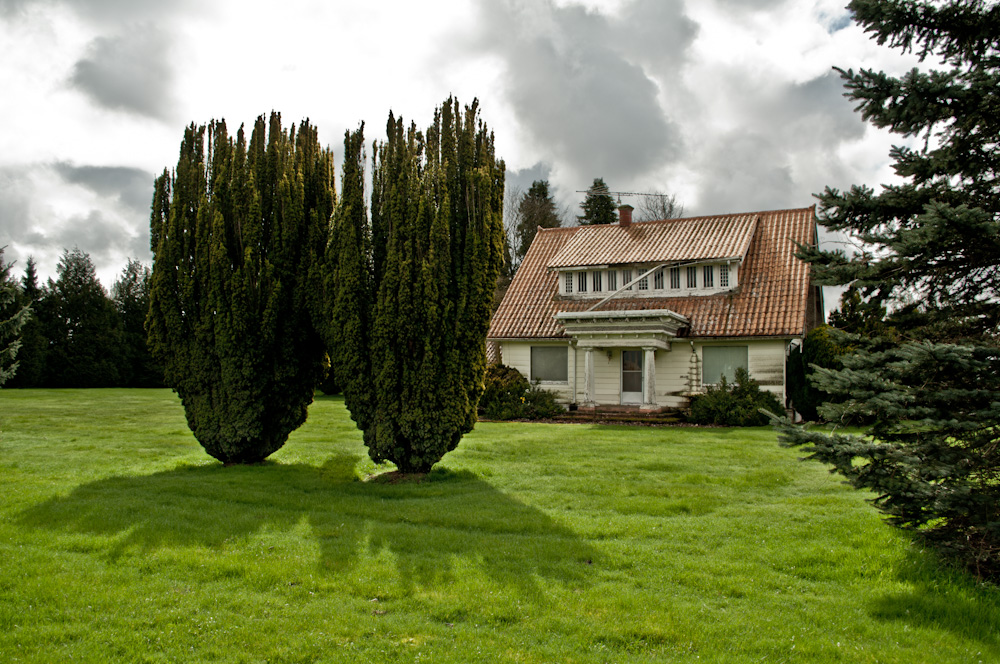
Whether what I did was good or not is not the point, the point is that by using local adjustments, the healing brush, graduated filters and overall image adjustments I was able to create the image I wanted without leaving Lightroom. There are definitely areas within the software that could stand improvement but I don’t think Adobe has much appetite for that as they won’t want to create a situation where people feel Lightroom is all they need and have them forgo buying the much more expensive Photoshop.
Here is the before and after, hopefully most of my edits will be unnoticed except for the most obvious one of course.
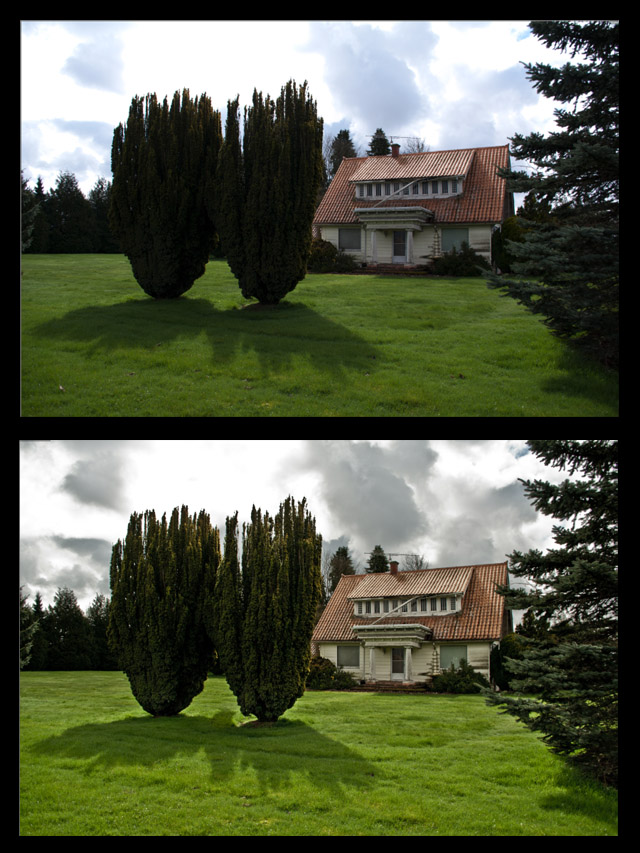
no comments | tags: Digital, editing | posted in Photography, Processing
Apr
8
2012
When you take a photograph, unless you arrive blind folded and close your eyes, you can’t help but be influenced by what you’ve seen before. That is the nature of photography, we try to recreate what we like whether it’s preserving an instant for the future or duplicating the now. I can say this because I do it too.
Case in point this image, I took this picture while out on a bike ride with my daughter. The moment I saw this long building I knew the way it ran horizontally would mimic the look of the Rhine river in Andreas Gursky’s “Rhine II“ Do I wish that I could say I just saw this building and took an interesting picture, yes, but to deny that in a sense this is an attempt to capture my own piece of someone else’s vision would be wrong.
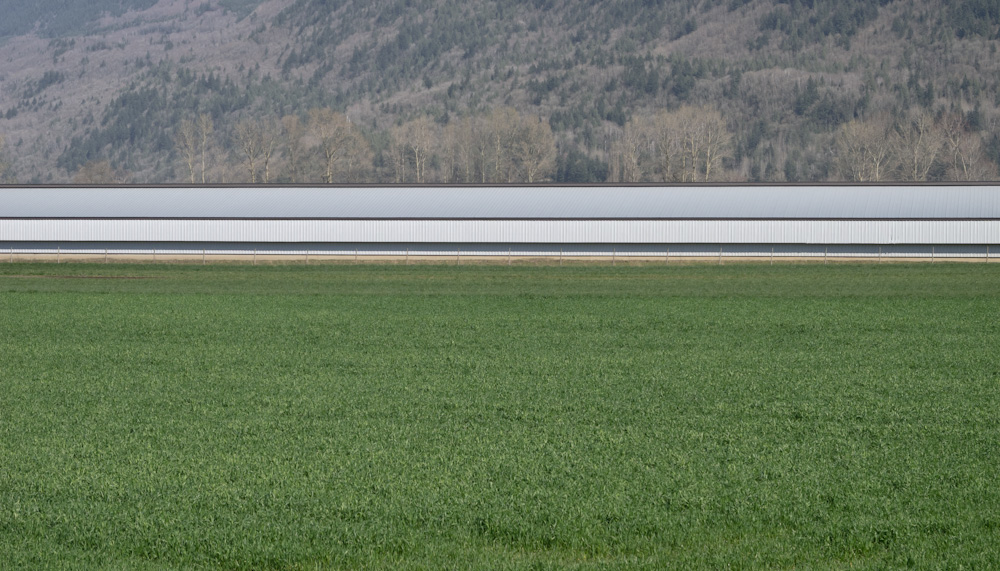
So in a world so full of imagery how do you create a personal style and is that absolutely necessary. Is there anything wrong with being a “collector” of images or refining a type of image? I don’t think so if it serves the purpose of the photographer. Knowing that you’ve created something good and then wanting to share it is rewarding. An image like “Rhine II” isn’t valued at millions of dollars because it is such a good photograph but because of everything else surrounding the world of contemporary art.
So take another picture of blossoms or a bird or whatever interests you and enjoy the doing, and the knowledge that it’s yours.
no comments | tags: Digital, Photography | posted in Composition, Photography
Mar
11
2012
I’m going to share with you a method I use to create a reasonably effective film grain look with digital files. Yes there is software that can do this and some of them do a pretty good job but not always and why not use what you have. Lightroom for instance provides the ability to add grain to an image but it does this across the entire image without regard to exposure which is not the way that film looks I’m sorry to say Adobe.
To begin with here is an image I shot at ISO 3200 with my Pentax K7 1/8000 sec and f2.8, even though the image has been down sampled you can still see the digital noise that will become our “film grain”.
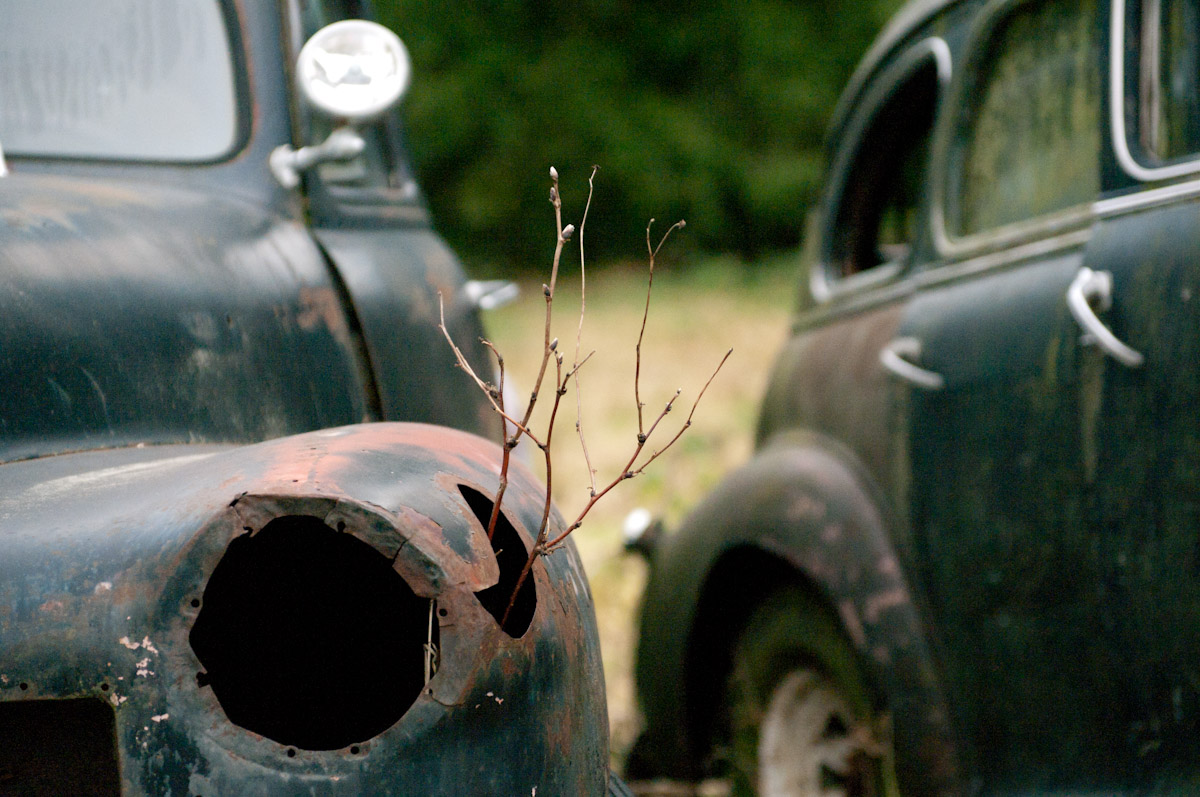
I then take this file and use the in camera processing to make these adjustments.
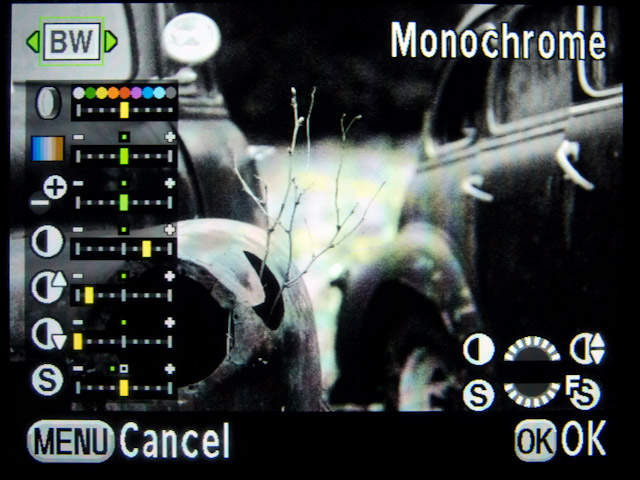
Custom Image Monochrome/Filter Effect Red/No Toning/
High Low Key Adjustment (here you can effect the image’s overall brightness while maintaining the highlights and shadows)
Contrast +2 (the film I’m trying to mimic is more contrasty than the digital capture)
Highlight Contrast -3/Shadow Contrast -4 (Here we want to reduce some of that contrast we just added but only in the shadows and highlights)
Set sharpness to zero as we already have a grainy image and we don’t want to over emphasize this and create something unnatural.
We also want to ensure that High ISO noise reduction “NR” is turned all the way off just prior to processing the image.
And the resulting image made to mimic Kodak PX125 otherwise known as Plus-X

And a 100% crop (There will be some compression due to the reduction in file size for the internet)
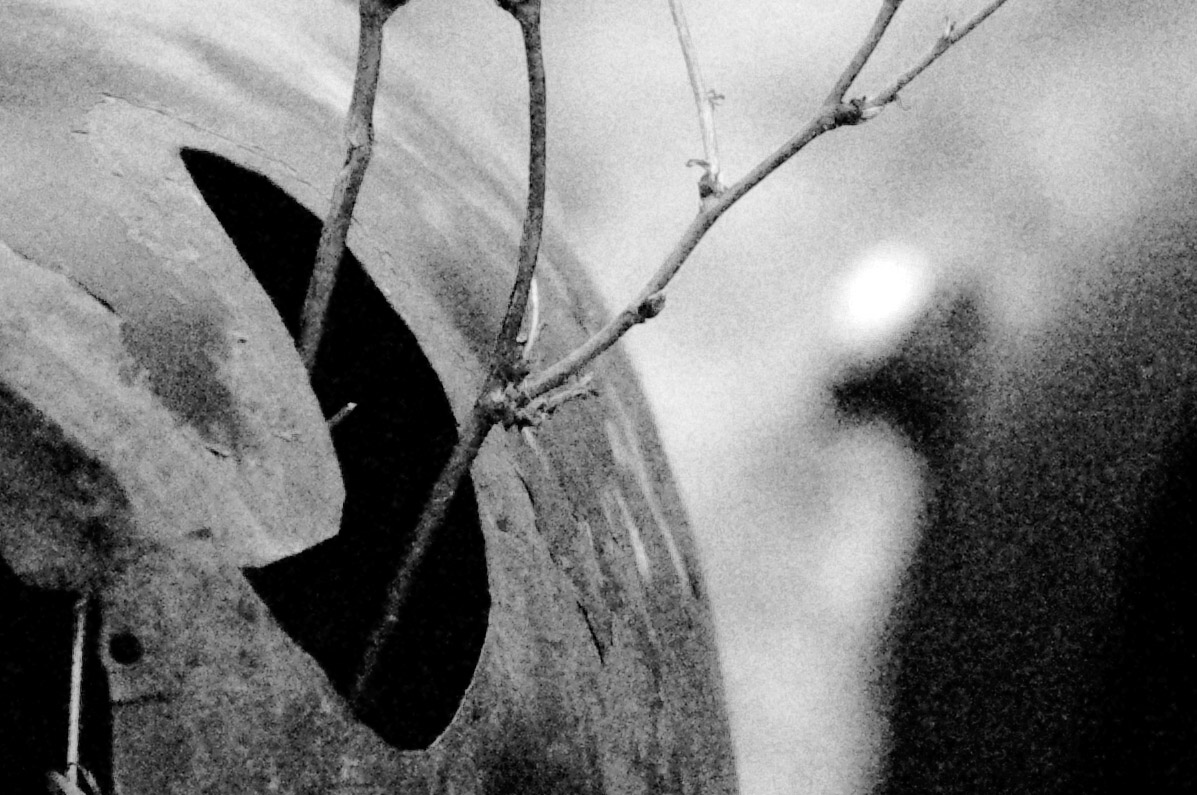
This is just one example of what can be done but it all started with taking a RAW image shot at high ISO.
And a few more examples
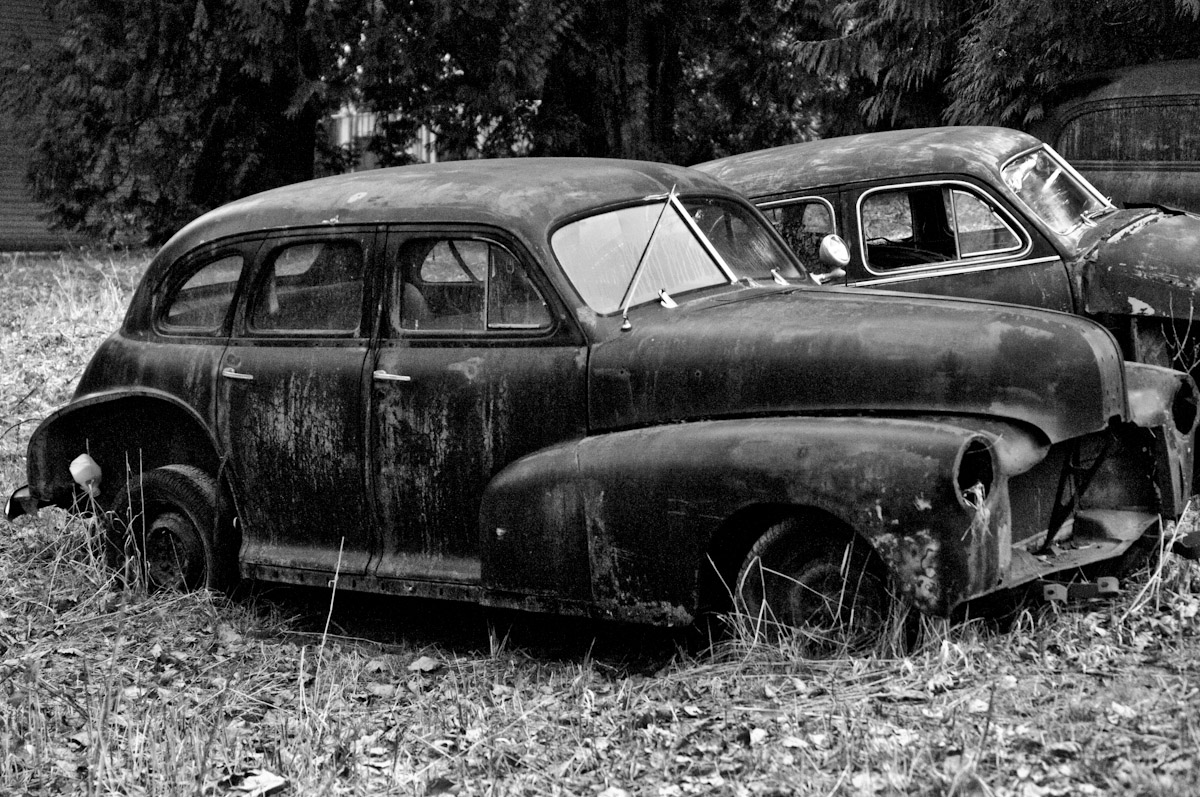
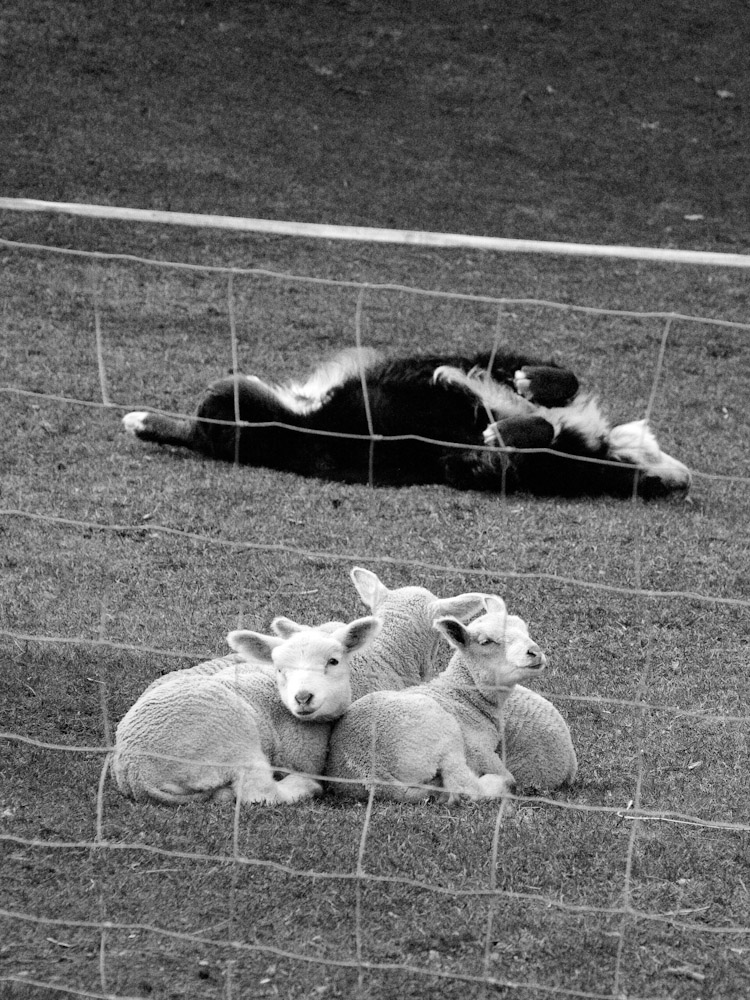
and a detail from the above image shot at 1600 ISO and processed in a similar way.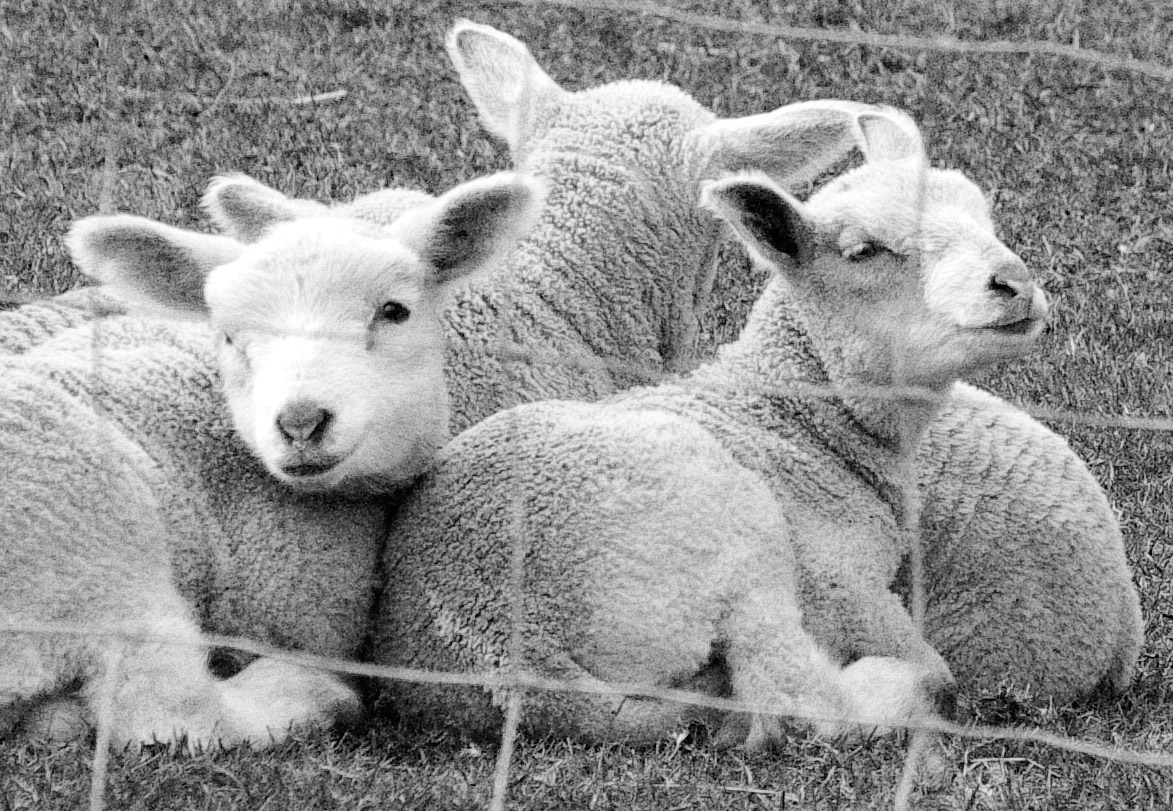
One final note, you may have noticed that I mentioned I shot that first image at 1/8000 of a second at f2.8 at an ISO settingof 3200. As sensors improve there is less and less noise at higher ISOs so this technique may not work as well into the future. If for instance it took an ISO of 6400 to achieve this result I would already have to stop down the lens to F4 as my shutter is limited to 1/8000 of a second as are most high end DSLR’s. In this case I’ve created a situation where I’ve overridden the noise reduction technology but that too may not always possible. Have fun and experiment.
I used this technique back in December of 2009 to create this set of images Bellingham
2 comments | tags: Digital, film, grain, noise | posted in Photography, Processing
Feb
2
2012
This morning Pentax has released a new camera the K-01 which is the first “mirrorless” camera that takes full size DSLR lenses without an adapter. One thing about this camera that is sure to draw controversy is the fact that it has no viewfinder. It relys solely on its 3″ rear LCD for image composition, this is a foreign concept for many people. Essentially the camera will be held with two hands out in front of your face, very much like a point and shoot. Having used both types of cameras for at least the last 8 years I can say that the usage is so different that many current DSLR users will not be willing to use this camera because of it’s lack of a viewfinder. That said when you are comfortable with that method of shooting it seems quite natural.
On the what’s different side Pentax has added the ability to shoot in multiple aspect ratios at the time of capture rather than needing to compose with a future crop in mind. The available ratios are (4:3, 3:2, 16:9 and 1:1) . I like this idea very much as I do like to compose mainly on the spot.
Here is the link to Pentax Canada’s information for the K-01 http://pentaxcanada.ca/en/digital_slr/K-01/
Did I mention it comes in yellow! 
and now for the rest of the original post……

While the Pentax MV is an SLR with a mirror and the ability to change lenses it really performs like a manual focus point and shoot. What I mean by this is that there is little user control. Yes you set the aperture and it selects the shutter speed but beyond that you must rely on the camera to get the exposure correct. For most of this roll of film I mounted the Pentax SMC A 40mm pancake lens which together with the body makes a very compact camera all things considered.
I used outdated film and got what I deserved but converting it to B&W gave me some results that I’m happy with.
1 comment | tags: Cameras, Digital, film, P&S | posted in Cameras, Photography, Processing





















